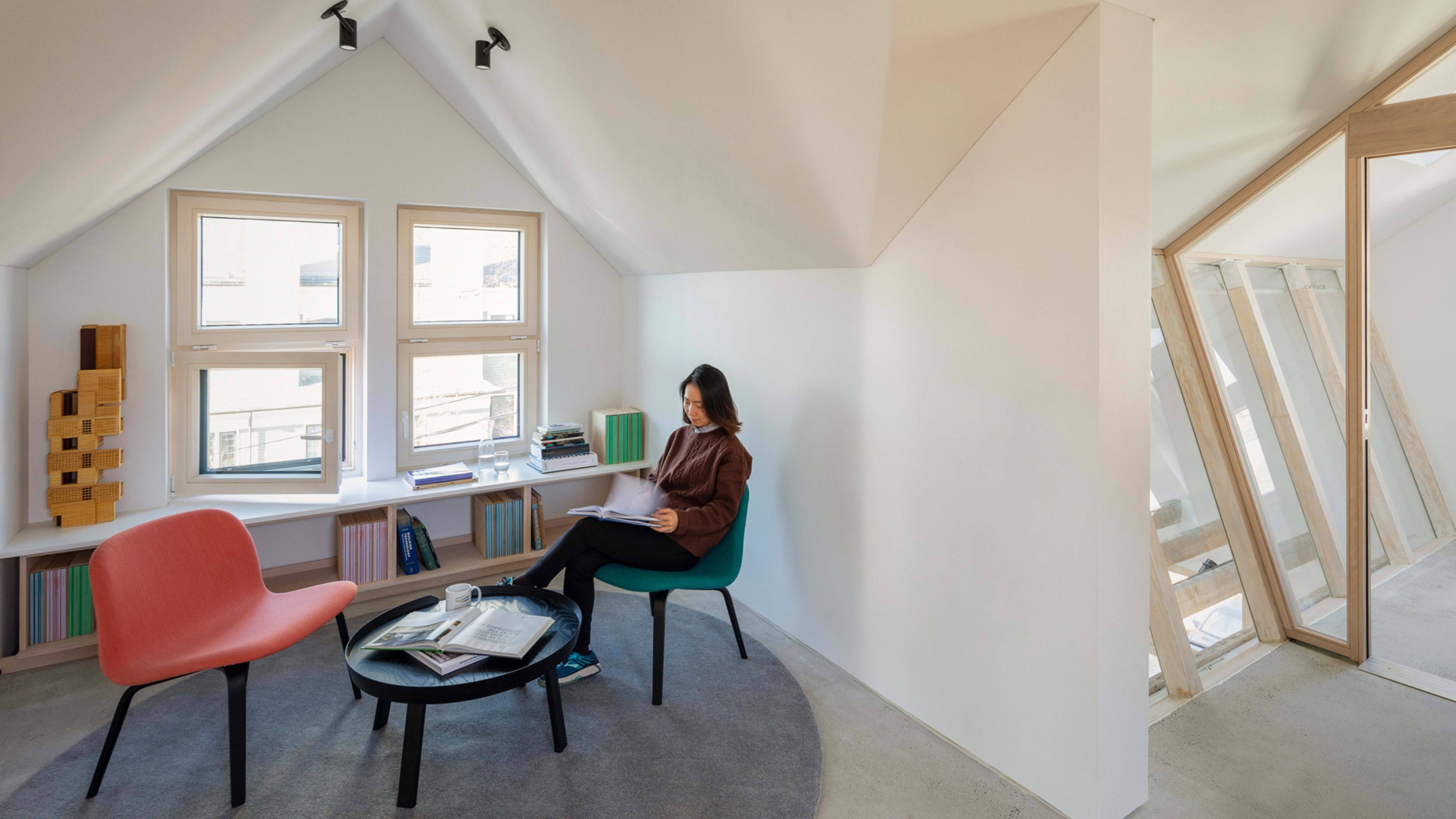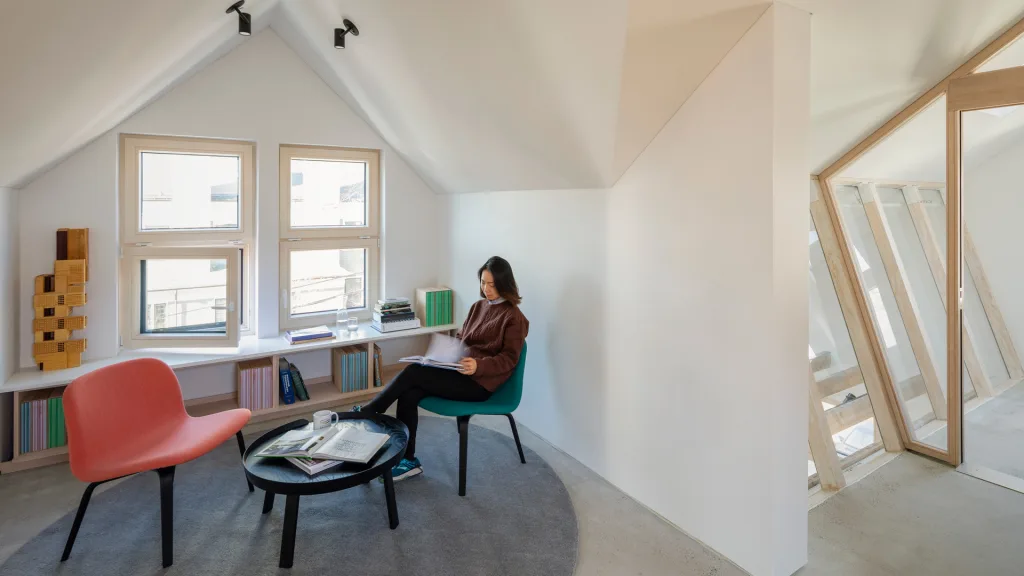Achieving a net-zero lifestyle may seem an unapproachably ambitious goal, particularly for the vast majority of us living in older homes, or renting them. But if we stand a chance against climate catastrophe, architects, engineers, and the buildings they create will necessarily play a huge part in moving the needle–and not just in shiny new buildings, but more crucially, by retrofitting existing structures as well.
Energy efficiency is a key factor in reducing emissions and curbing the effects of climate change. Residential and commercial buildings alone accounted for about 39% of total energy consumption last year in the U.S., according to the Environmental and Energy Study Institute, and a recent report from the UN found that 65% of projected building stock expected worldwide in 2060 has already been built.
Do the math and the answer is clear: We need to act to improve existing structures–and quickly.
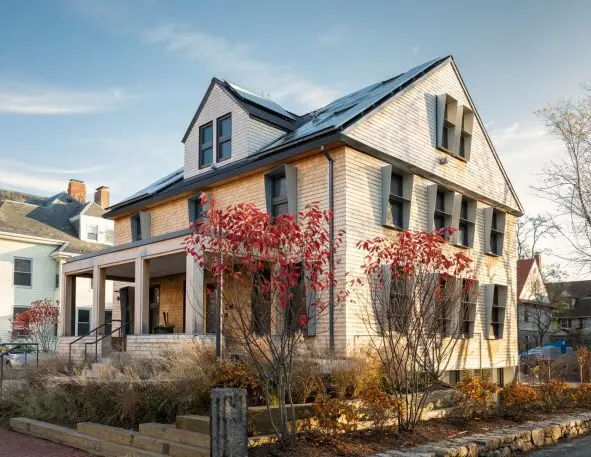
A growing number of institutions, schools, and industry groups are hoping to spur that kind of action.
The latest is Harvard University’s Center for Green Buildings and Cities (CGBC) and Graduate School of Design (GSD), which this week launched HouseZero, a new working prototype and “living laboratory” of an older structure that’s been renovated to become an ultra-efficient machine for living. It makes a necessary and approachable case for renovating existing homes into energy-positive structures–or buildings that actually produce more energy than they consume over a lifetime of use, and offset the emissions created by renovating them.
Harvard’s HouseZero isn’t a cold or stark vision of survivalism, but rather a warm, wood-shingled 1940s building that’s been expertly refurbished to meet performance demands of our time.
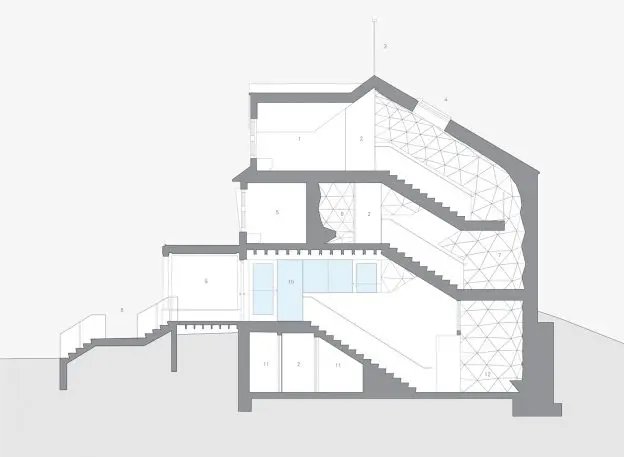
HouseZero is a current model for a best-case, cutting-edge renovation for remediating existing structures, but it points to a goal that many have identified as a top-down defense against climate change: Focusing on existing buildings. Nonprofit organizations like Zero Energy Project offer builders and homeowners information and resources for improving energy efficiency; meanwhile, our more advanced Dutch counterparts have designed prefab kits for updating homes–even rental units–into net-zero nests.
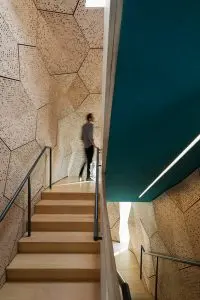
HouseZero will be used as both an active workspace and a research tool, and the Center anticipates this sensory data collection will provide unprecedented understanding of how buildings–and in turn the behaviors of its occupants, i.e., us–truly operate, to aid in the generation of learning algorithms. Meanwhile, retrofitted features including solar photovoltaic panels, solar thermal water heating systems, and a weathervane will operate to enhance the building’s overall performance. Over time, Harvard CGBC plans to release the system’s collected data points on a public platform as a resource for others in the field.
But a mix of analog, low-tech features, such as natural ventilation, also play a significant part in how the building “adjusts itself constantly, sometimes by the minute,” says Harvard CGBC. The network of sensors, for example, would work in concert with special hardware that automatically opens or closes windows as needed, though letting users open or close them the old-fashioned way, with their own hands, importantly keeps the home “firmly tethered to the human instinct.”
The ultra-efficient residence of the future, HouseZero argues, isn’t all Jetsons, gadgets, and robots–it’s something that should, and will, feel very at home.
Recognize your brand’s excellence by applying to this year’s Brands That Matter Awards before the early-rate deadline, May 3.
